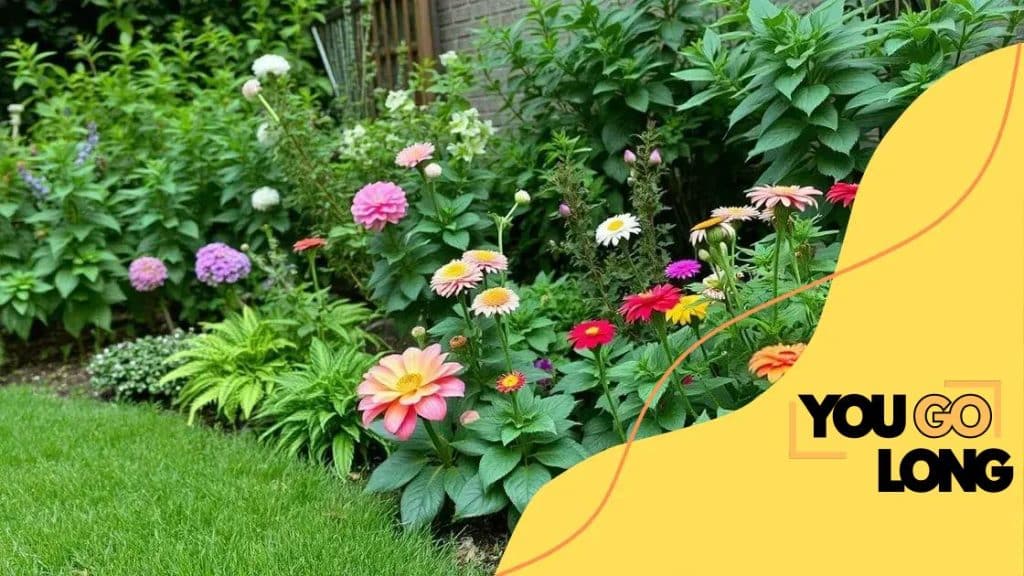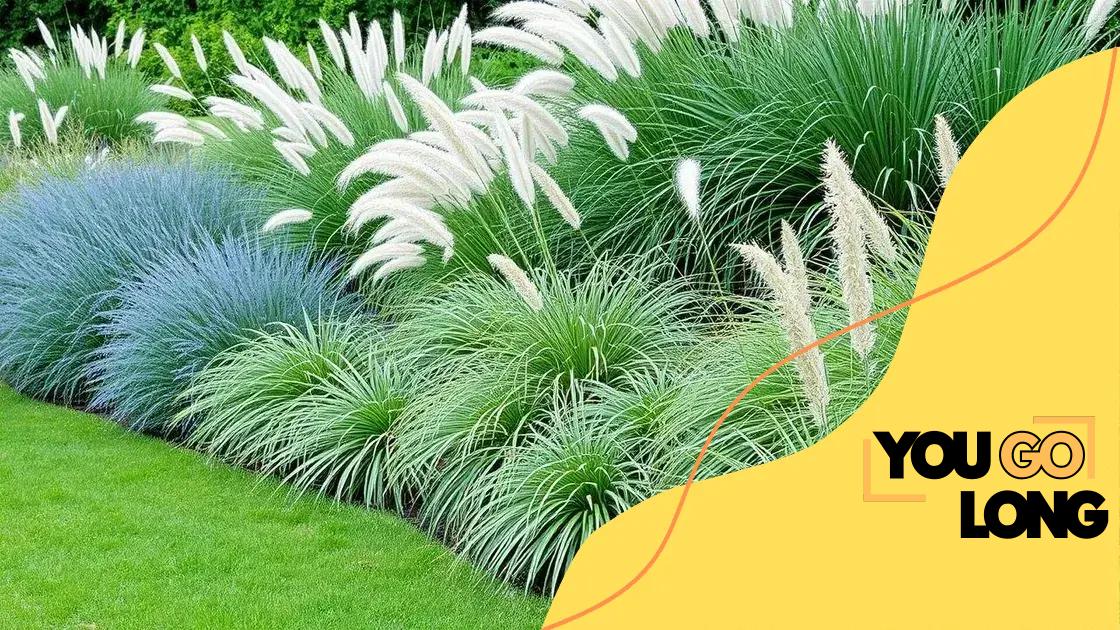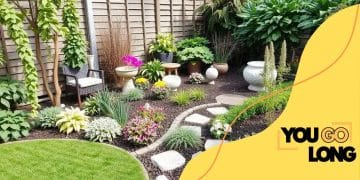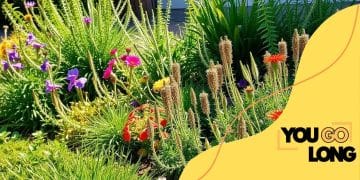The best plants for creating a low-maintenance garden

Advertisement
The best plants for creating a low-maintenance garden include native species, perennials, and drought-tolerant grasses, which require minimal care while providing beauty and sustainability throughout the seasons.
If you’ve been dreaming of a garden that requires minimal upkeep, you’re in luck. The best plants for creating a low-maintenance garden not only brighten your space but also save you time. Let’s dive into some practical options that suit your lifestyle.
Top perennials for easy care
When it comes to creating a low-maintenance garden, selecting the right plants is essential. Top perennials for easy care can make all the difference, providing beauty with minimal effort. These plants come back year after year, allowing you to enjoy your garden without constant upkeep.
Why Choose Perennials?
Perennials are popular because they establish roots and bloom consistently. Unlike annuals, which need replanting every season, perennials save you time and energy. You can plant them once and watch as they thrive with the right care.
Advertisement
Best Easy-Care Perennials
- Daylilies: These vibrant flowers are resilient and adapt well to various conditions.
- Hostas: Perfect for shady spots, hostas add lush greenery with minimal maintenance.
- Lavender: Not only does it smell delightful, but lavender also requires little water and attracts pollinators.
- Sedum: With its thick, succulent leaves, sedum is drought-tolerant and thrives in sunny areas.
Integrating these perennials into your garden can create stunning displays with low effort. Additionally, they serve to enhance biodiversity, supporting local wildlife and pollinators. As you plan your garden layout, consider mixing these plants to ensure year-round interest and color.
Caring for Your Perennials
Even low-maintenance perennials need some care. Basic steps include watering during dry spells, dividing them every few years to encourage growth, and applying mulch to suppress weeds. Proper care boosts their health and appearance while keeping your garden looking fresh.
In summary, incorporating top perennials for easy care into your garden will not only simplify your gardening routine but also provide sustained beauty throughout the seasons. With the right selections and a little attention, you can have a vibrant landscape that delights all year long.
Advertisement
Best shrubs for low-maintenance gardens
Choosing the right shrubs is key to a low-maintenance garden. The best shrubs for low-maintenance gardens offer beauty without the hassle of constant care. They can survive dry spells and still provide lush foliage and flowers.
Why Opt for Shrubs?
Shrubs are versatile plants that can shape your garden’s design. They require less watering once established and can tolerate various soil conditions. By selecting the right varieties, you’ll create a vibrant garden space that thrives on minimal care.
Top Low-Maintenance Shrubs
- Boxwood: This evergreen shrub is shaped easily and adds year-round greenery.
- Aronia: Also known as chokeberry, it boasts beautiful white flowers and berries, supporting wildlife.
- Spirea: With its clusters of pink or white flowers, spirea needs little pruning compared to other flowering shrubs.
- Barberry: This hardy plant offers unique colors and resilience, thriving in diverse conditions.
Integrating these shrubs into your landscape provides variety and texture. As they grow, they require minimal pruning and little watering. With the right placement, these shrubs can serve as effective borders or focal points within your garden.
Care Tips for Shrubs
To ensure your shrubs flourish, focus on proper placement and soil preparation. When planting, dig a hole twice as wide as the root ball. Mulching around the base helps retain moisture and prevents weed growth. Occasional feeding during the growing season can boost their health, but many shrubs thrive in poor soil conditions.
In conclusion, selecting the best shrubs for low-maintenance gardens will simplify your gardening routine while creating a visually striking outdoor space. With the right choices, you can enjoy a dynamic landscape that requires less time and care.
Grasses that thrive with little attention

When planning for a low-maintenance garden, incorporating grasses can add texture and movement. There are several grasses that thrive with little attention, making them perfect for busy gardeners. Not only do these grasses look beautiful, but they also offer simplicity in terms of care.
Benefits of Low-Maintenance Grasses
Low-maintenance grasses require less water and care than traditional landscaping plants. This makes them ideal for those who want beauty without a lot of work. Additionally, many of these grasses can thrive in a variety of soil types and conditions, contributing to the overall landscape.
Top Low-Care Grasses
- Blue Fescue: This grass is small, clumping, and has a striking blue color. It’s drought-tolerant and requires little maintenance.
- Ornamental Grasses: Varieties like Pennisetum and Miscanthus are easy to grow and add height and interest.
- Buffalo Grass: Ideal for lawns, buffalo grass is drought-resistant and grows well in sunny areas.
- Feather Reed Grass: This tall grass provides beautiful plumes and remains attractive all year round.
These grasses not only enhance the beauty of your garden but also support local wildlife by providing habitat. When planted correctly, they can fill spaces while requiring minimal intervention.
Caring for Your Grasses
While low-maintenance grasses need less attention, they do benefit from proper planting and occasional care. Make sure to place them in suitable locations with adequate sunlight. Regular watering during dry spells will encourage healthy growth, and a light trim in the fall can promote better performance for the next season.
In conclusion, selecting grasses that thrive with little attention can significantly ease your gardening routine. With these choices, you’ll enjoy a vibrant and beautiful landscape with minimal effort.
How to select plants for your garden
Selecting the right plants for your garden is crucial for creating a beautiful, low-maintenance landscape. Understanding how to select plants for your garden can make the process enjoyable and rewarding. Different plants thrive in different conditions, so it’s essential to consider your specific environment.
Assessing Your Garden Environment
Before you choose plants, assess your garden’s conditions. Consider the amount of sunlight your garden receives daily. Some plants prefer full sun, while others thrive in shade. Additionally, evaluate your soil type, moisture levels, and local climate.
Choosing the Right Plants
- Native Plants: These plants are adapted to your local climate and soil. They often require less water and are more resistant to pests.
- Perennials vs. Annuals: Perennials come back each year, while annuals last only one season. For a low-maintenance garden, prefer perennials.
- Growth Habit: Consider how tall and wide the plants will grow. This helps in planning the layout and ensuring plants have enough space.
- Color and Texture: Mix different colors and textures to create visual interest. Choose plants that bloom at various times for seasonal appeal.
Once you have a list of suitable plants, envision how they will fit together in your garden. Sketching out a plan can help you visualize the layout. Grouping plants with similar water and light needs can simplify maintenance.
Installation and Care
After selecting your plants, prepare the planting areas by removing weeds and improving the soil with organic matter. When planting, follow the specific instructions for each type. Watering and caring for your plants after installation is just as important as choosing them.
Remember that choosing plants shouldn’t feel overwhelming. With a bit of planning and thought about your garden’s unique conditions, you can create a space that flourishes with minimal upkeep.
Seasonal considerations for a low-maintenance garden
Planning for a low-maintenance garden requires attention to the changing seasons. Understanding seasonal considerations for a low-maintenance garden helps you choose plants that thrive year-round. This strategic approach simplifies care and enhances your garden’s beauty.
Spring Planting
In spring, it’s the perfect time to plant new additions. Choose perennials that will establish healthy roots before the summer heat. Pay attention to your local frost dates to avoid planting too early, which can hinder plant growth.
Summer Care
During the hot summer months, make sure your plants receive enough water. Even low-maintenance plants may need additional watering during dry spells. Mulching around your plants can help retain moisture and suppress weeds, reducing the need for constant care.
Fall Preparation
As summer fades, fall is ideal for maintenance tasks. Consider dividing perennials to promote healthy growth. Adding organic matter to the soil improves its structure for winter. It’s also a great time to plant bulbs for spring blooms.
Winter Considerations
In winter, focus on protecting your plants from harsh weather. Covering sensitive plants with mulch or burlap can shield them from frost. Evaluate your garden layout during this season to plan for spring changes that improve aesthetics or maintenance.
By understanding the seasonal considerations for a low-maintenance garden, you can create a space that looks great without a lot of effort. Each season has its unique tasks, but with the right planning, you can effectively manage your garden with ease.
Creating a low-maintenance garden can be a rewarding experience that offers beauty and ease. By selecting the right plants, understanding seasonal changes, and implementing simple care strategies, you can enjoy a vibrant landscape year-round. Remember to incorporate native species and perennials to reduce upkeep while contributing to the local ecosystem. With careful planning and the right choices, your garden can thrive beautifully with minimal effort.
FAQ – Frequently Asked Questions about Low-Maintenance Gardens
What are some benefits of a low-maintenance garden?
A low-maintenance garden saves time and effort while still providing beauty. It often requires less water and care, making it ideal for busy individuals.
How do I choose the right plants for my garden?
Select native plants that thrive in your local climate and group them based on their water and light needs to simplify care.
What should I do during the different seasons?
In spring, plant new perennials. Water regularly in summer, prepare soil in fall, and protect plants during winter to ensure year-round health.
Is mulching necessary for a low-maintenance garden?
Yes, mulching helps retain moisture, suppress weeds, and improve soil quality, making it an important practice for low-maintenance gardening.





